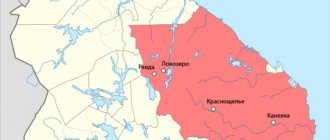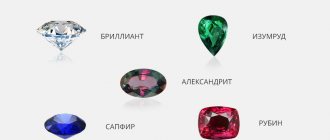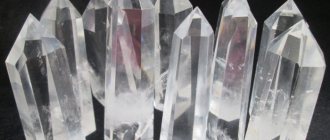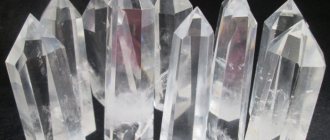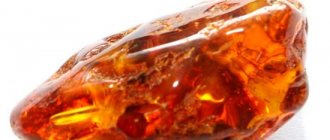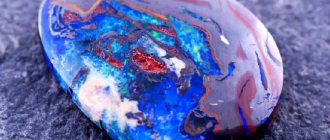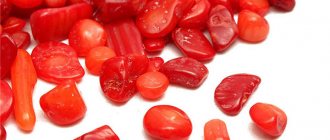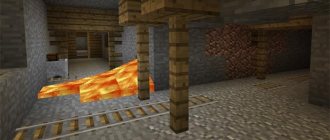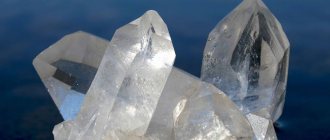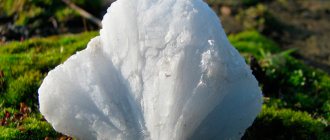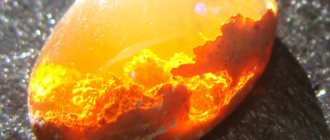The natural power of gems
- Aventurine is a symbol of love and happiness. Such minerals of pink, green or brown color will allow a person to reveal his creative abilities.
- Ruby is a stone for leadership. It gives its owner additional energy.
- Turquoise is a stone of luck and victory. He has unusual abilities that allow him to suppress feelings of anger and irritation towards people.
- Malachite is an ideal amulet for children. It will protect them from danger and the manifestation of disease.
- Lapis lazuli is a heavenly stone that imparts kindness and peace to its owner.
Interesting facts about minerals
Minerals are natural bodies that are homogeneous in chemical composition and physical properties. They were formed as a result of physical and chemical processes that occur on the surface of the Earth and in its interior. Translated from Latin, minera means ore. The kingdom of minerals surrounds us, they are everywhere, our planet itself consists of them. Most of the stones received their names in ancient times - at a time when the science of mineralogy did not yet exist, but people were already actively using many minerals.
Galena interesting facts. Properties of galena
Lead luster (another common name for the mineral) has been known to mankind for quite some time. Even in the times of Ancient Rome, the rock was actively used to extract silver and other metals from it. In addition, galena was endowed with a lot of magical properties.
Galena stone
Today, jewelry with this mineral is rare, the reason for this is the difficulty in processing the material. But you can still find collections of designer jewelry that are inlaid with lead glitter. Since the mineral is mined all over the world, jewelers do not experience any particular shortage of galena.
The leading countries in production are the following:
- Italy.
- Czech Republic.
- Romania.
- Bulgaria.
- Australia.
- USA.
- Mexico.
- Canada.
- Chile.
- Russia.
In our country, the mineral is mined on an industrial scale in several regions.
The chemical formula of lead luster is PbS, but the mineral is rarely found in nature in its pure form. Most often it contains silver, which is why the mining of galena is so widespread. Geologists say that if at least one crystal of lead luster has been found in the bowels of the earth, then it is likely that a deposit of silver or even gold will be discovered nearby.
Other characteristics of galena:
- characterized by increased fragility, hardness on the Mohs scale is 2.5% of the unit;
- easy to melt;
- has a characteristic metallic luster;
- characterized by perfect cleavage;
- the crystals have a continuous fine or coarse-grained structure.
Crystals do not tolerate humidity and sun light. These factors change the color of the mineral and deprive it of its characteristic leaden luster.
Despite the fact that galena has been known to mankind for a long time, it can safely be called the most unpopular material in the jewelry industry. But in other industries it is quite in demand.
Galena is used for the following purposes:
- Lead is extracted from the rock. Later it is used to create batteries, household items, etc.
- Lead is considered a sought-after metal and is used in the defense industry, as well as in the process of creating electrical equipment.
- In addition, it is worth considering that crystals contain impurities; they are often used to extract silver.
Galena is a specific mineral and not everyone will like it. The fact is that crystals, even after processing, have minimal resemblance to stones. For this reason, they are used in limited quantities to create designer jewelry.
Feldspar interesting facts. History and origin
The first finds and use of feldspar go back to ancient times. No one knows the exact time when the mineral was discovered. There are only scattered references to the stone in handwritten sources from different times.
The name “feldspar” is German, although it has Swedish roots. This is because the agricultural land located on the lands of modern Sweden is completely strewn with feldspar. Mineralogists believe the origin of the name is Swedish-German, where “feldt” means “arable land” and “spath” means bar. In 1740, the German term "feldspat" was introduced. In addition, scientists claim that the Russian-language term “cleavage” should have been pronounced as “spatnost”.
In mineralogy, feldspar is understood as a whole group of minerals. The origin of the stone is magmatic. In fact, feldspar is the rock-forming material of our planet. In its pure form, this nugget is inconspicuous. However, pure spar is rare. The bulk of stones include various impurities, which separates them by chemical composition, type, and name.
This is interesting! The Moon is rich in feldspar, like the Earth. This mineral is not uncommon in outer space - most meteorites contain feldspar.
The fact that spar has been used by people at all times is confirmed by archaeological finds during excavations. Nugget jewelry made by people of ancient civilizations has been found in Egypt and other Eastern countries. Scientists of all eras have studied the capabilities of this mineral. Research in this area is still being carried out.
Choosing the right stone
When choosing a talisman for yourself, astrologers recommend relying on zodiac signs, date, and month of birth. Choosing a talisman is somewhat easier. To do this, you need to determine what you should protect yourself from.
Read also: Marble, composition, types, properties, applications, interesting facts
The most powerful amulets are those given by loving people from the heart. Also good are those talismans that were literally given by fate or appeared in life under strange circumstances.
Children about minerals. A list of entertaining and colorful books on mineralogy and geology for children
All these books are written in a language that children can understand and contain very bright and large illustrations. It will be interesting for both children and parents.
1. “Minerals. 100 facts." S. Calleri You will learn how geologists restore the ancient history of the Earth, what composition our planet has, what are the similarities and differences between stalactites and stalagmites, what kind of minerals are part of unique architectural monuments, what properties can be used to distinguish outwardly similar minerals, why they are so valued precious stones and how they are obtained.
2. “The World of Stone.” V. Schumann In a simple and very accessible form, the author talks about the processes in the earth's crust, the properties of mineral matter and methods of studying it, gives brief characteristics of the main minerals, rocks, fossil remains (fossils). The book contains a lot of well-chosen, effective color illustrations.
3. “The Stone Has Its Own Story” by Dianna Aston and Sylvia Long A book from a series of art books by Dianna Aston. There is a whole collection here: from sandstone and granite to bright blue azurite and snow obsidian. An amazingly beautiful book for both children and adults! This book will allow you to learn to feel nature and see its beauty.
4. “Stones and Shells” by M. Zellvelder A book from the “World of Wildlife” series will help the young reader “look” inside our planet and learn about volcanoes, glaciers, rocks and fossil remains.
5. Children's encyclopedia "Minerals" T. Dolzhanskaya Clay and sand, stones and asphalt, mountains and water, minerals in the bowels of the planet - all these are minerals.
Learn more amazing facts about our planet in the “Geological Laboratory” classes for children 7-12 years old from November 17.
